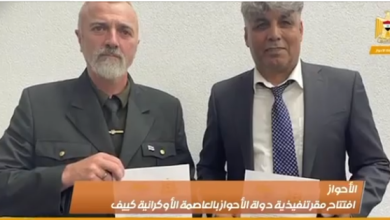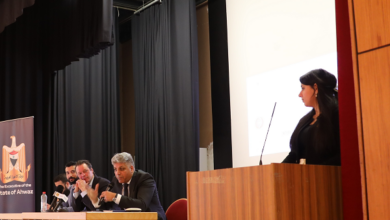
Internationalinterviews
Ahwaz is an occupied Arab country and not a region within Iran
Kifah Al-Tamimi
Today, April 20, 2022, marks the 97th anniversary of the occupation of Al-Ahwaz. We will present two important facts:
I. the nature of the Al-Ahwaz entity,
II. and the details of its downfall.
The components of the state are three: people, territory, and sovereignty. All of them were available to Al-Ahwaz before its occupation, as the people were and still exist, and the region also exists with its land, water, and sky. But sovereignty was lost to Iran by Persian and British military forces on April 20, 1925. So Al-Ahwaz is a state that was established after the fall of the Abbasid state and lasted for five hundred years (Al-Mushashaiyah 300 years and Al-Kaabiyyah 200 years) until its occupation in 1925.
As for the British reasons to overthrow Al-Ahwaz, it was the fear of the call of the Prince of Al-Ahwaz, Sheikh Khazal Al-Kaabi, for Arab unity, which contradicts Britain’s policy of dividing the Arabs into states to prevent their union and their renaissance and to take revenge for the Ahwazis’ assistance to the Iraqis in the twentieth revolution against the British. As for the Iranian reasons, it was and still is the expansion that is seen and heard today in the rest of the Arab countries.
The Shah and the English began to incite Sheikh Jasib ibn Sheikh Khazal against him, which prompted Sheikh Khazal to exile him to London in 1919 and he never returned from it. And there was the deception of sectarian division that Iran uses to this day repeatedly to control the Arabs (a policy of divide and rule), as the Shah declared Sheikh Khazal to be infidels on the pretext that he called for Arab unity, which resulted in placing the Ahwazi Shiites under the rule of the Sunni Arabs. This incitement was accepted and demonstrated by those who were deceived by the Arabs the Shah took advantage of this strife that he had sowed and under its pretext occupied the cities of Quneitra (Desful) and Tster in the north of Ahwaz in 1924. The English prevented the Al-Kaabi army from liberating the two cities of Al-Ahwaz, but rather put pressure on the King of Iraq, so this instructed the Iraqi press not to publish the news of Al-Ahwaz, and the Iraqi Council of Ministers issued a decision on 10/18/1924 making Iraq neutral. Then Sheikh Khazal was kidnapped to Tehran on April 20, 1925, with a malicious and cowardly trick, and the Shah issued a statement saying that Sheikh Khazal abdicated the rule to his son Abdullah and Iran has the right to supervise the internal governance of Ahwaz, while Ahwaz cut off its foreign trade and political relations with other countries. After broadcasting this statement, the Iranian forces occupied Ahwaz, but the Kaabi army was able to liberate it two days later. But the British destroyer Triad bombarded Khorramshahr from the Shatt al-Arab, and Britain sent an armored division and an infantry division from Basra, forcing the Kaabi army to withdraw south to the city of Al-Falahiya. However, the policy of divide and rule practiced by the Shah had divided the Arabs into two parts: with Sheikh Khazal and against him. When Britain sided with the section that was against Sheikh Khazal, the Kaabi army and the section supporting Sheikh Khazal were forced to withdraw west to brotherly Iraq, so the Persians extended their control over Al-Ahwaz and thus ended the Arab rule in it. In the modern era.




